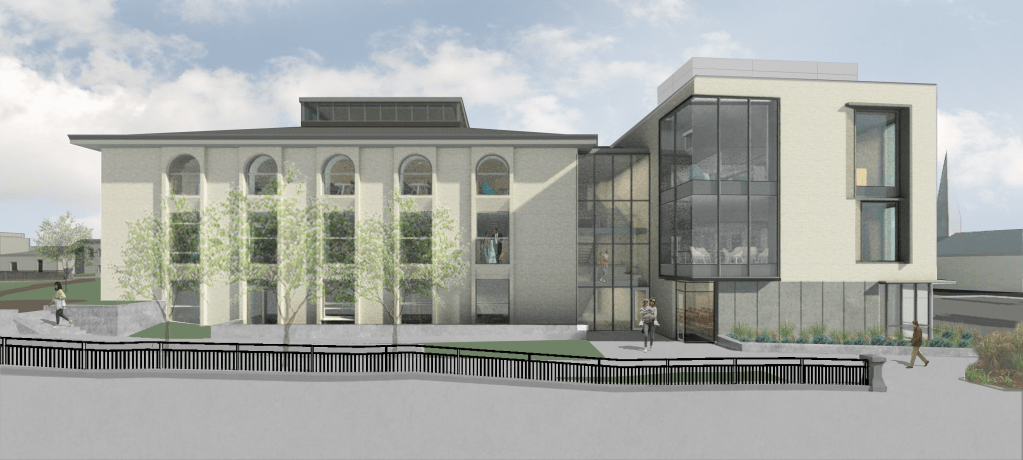
As the Sawyer Free 2025 Capital Campaign to fund the renovation and expansion of Cape Ann’s oldest public library enters its second year, Earth Day on April 22 arrives at a time when public libraries are driving efforts to educate, address and invest in climate resilience, climate justice and climate change infrastructure. Not coincidentally, the architectural design principles of Sawyer Free 2025 reflect a building that will stand as an exemplar of carbon consciousness and climate action.
The library is committed to reducing both the health and environmental impacts of global air pollution and climate change. The new facility’s green design and building plans will limit its carbon footprint during and after construction. Embedding climate resilience into the local community is emblematic of Sawyer Free 2025’s overall mission to put people first.
“In Gloucester, about 60 percent of greenhouse gas emissions come from the built environment,” said Gemma Wilkens, sustainability coordinator for the City of Gloucester. “Although a much smaller portion of that comes from the city’s buildings specifically—about two percent—each new building here represents the potential to transform the way we fuel and operate the built environment for a greener future.”
Many architectural elements of Sawyer Free 2025 will minimize environmental impact and ensure the facility’s sustainability throughout its lifespan. Maintaining the 1976 building’s facade will significantly reduce construction emissions of CO2 by preserving large amounts of existing concrete. The project will also utilize a grade of plywood that doesn’t off-gas greenhouse emissions and will build in systems that can harvest thousands of gallons of rainwater for irrigation.
Conservation measures will extend to the Sawyer Free 2025 landscape design. Such upgrades will include the use of indigenous plant species that are resistant to disease and bugs and won’t overconsume soil or water because they are appropriate for the regional climate. Groundcover will be planted instead of grass wherever possible, eliminating the need for lawn-mowing, herbicides, fertilizers and artificial irrigation.
A rooftop solar panel array is the cornerstone of the new library’s plan to become the first net-zero emissions public building on Cape Ann, thus placing its carbon footprint among the best one percent of public libraries in the Commonwealth. The renovation and addition will be served by common building systems designed for efficient consumption, energy generation and storage, and water use.
These steps by the library to future-proof and adapt will mitigate greenhouse gas production. The role of the built environment in tackling the global climate crisis is fundamental to sustainability action. According to the U.S. Green Building Council, occupied buildings account for nearly 40 percent of all greenhouse gas emissions. That figure does not factor in other infrastructure and activities associated with those structures, for example, commuting to and from them.
As respected, resource-laden community centers, libraries are well positioned to mobilize citizens to learn about climate change and take action—at home, in our towns and cities and around the world. Sawyer Free 2025’s design principles seamlessly align with the American Library Association’s Resilient Communities initiative, which helps libraries engage their communities in programs and conversations that address the climate crisis.
“I deeply believe that libraries are an important place where we can invest in climate change infrastructure, climate resilience and climate justice,” says Sawyer Free Library patron and Gloucester resident Lenore Maniaci. “Think about the many ways libraries can help communities prepare for and be served during extreme weather events. These impact all residents regardless of age, income level, housing or any other factor. The new Sawyer Library will help build a future that protects and supports the next generation.”
Sawyer Free Library’s cultivation of hands-on programming, community dialogue and resources in the realm of climate awareness is well-established. The successful completion of the Sawyer Free 2025 Capital Campaign will exponentially amplify the library’s capacity to impact climate literacy by generating a 25-percent increase in annual visitors, a 25-percent increase in the number of public programs offered each month by the library and a 50-percent increase in the number of programs hosted at the library by partner agencies.
For more information about the new library or to get involved, visit sawyerfree2025.org.

